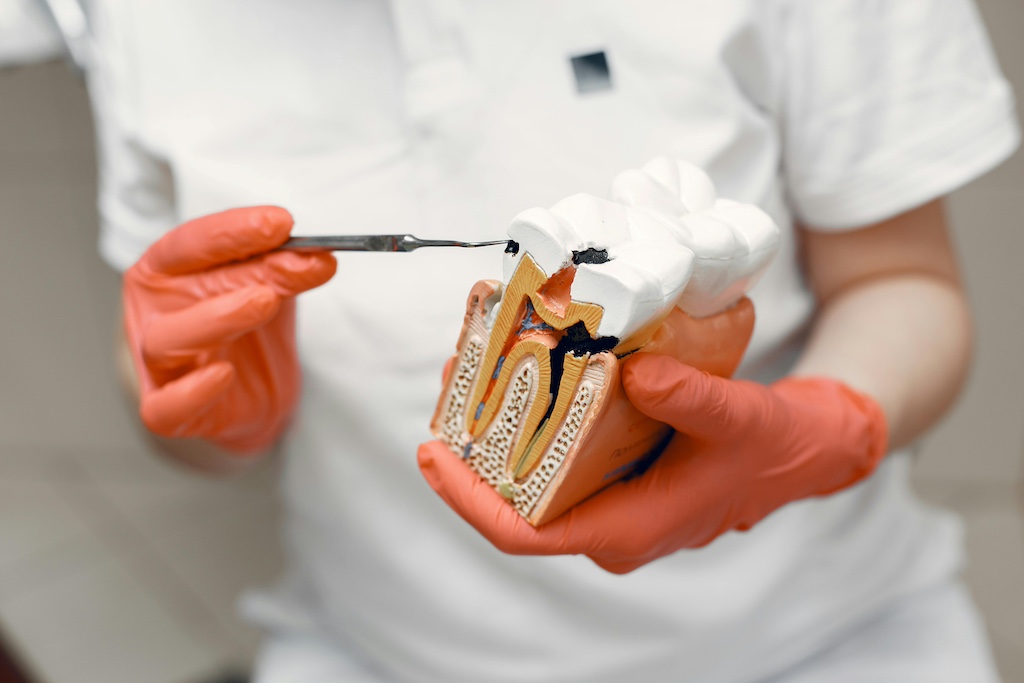When the term “root canal” comes up, you can’t help but think about some process designed to preserve a tooth, instead of the tooth being extracted. What’s really the case, though, is in some cases a tooth which underwent a root canal needs extraction. If this is a concern that’s with you, you’re probably wondering how the process really works, and who should conduct the process – many people even ask, can a dentist remove a root canal tooth?
This guide from Reflections Dental Care tells us why a root canal-treated tooth must be extracted and the process thereof. You should then feel more at ease and more empowered in making dental decisions after having read this!
What is a Root Canal Tooth?
Let’s be specific about what a “root canal tooth” really is. Root canal procedures are done in an effort to repair and save a tooth that’s seriously decayed or infected. In doing so, the pulp and nerve are emptied from the root canal in the tooth, the canal rinsed and then filled. The objective here’s the eradicating of the infection and the maintaining of the structure of the tooth. For those seeking root canal therapy in Oklahoma City, OK, understanding this process is crucial.
A tooth that undergoes the process becomes more likely to become brittle compared to a normal tooth. It does this since the process deprives the tooth of the blood that kept the tooth healthy. Therefore, a dentist will typically cap the tooth with a crown so it does not break. A root canal can see a tooth survive for a couple of extra years, but the process may not always remain permanent.
Why Would You Pull a Root Canal Tooth?
Then why should a tooth which needs to be preserved be put up for extraction? Various conditions can cause extraction in spite of undergoing root canal treatment or even a previous root canal treatment.
Persistent or Acute Infection
One of the most common reasons is a persistent infection. Infection may persist if the initial root canal didn’t eradicate all the infection, or if infection returns because there’s a crack in the tooth, or the filling didn’t turn out right. In this type of situation, treatment of the root canal can be an option, but if the infection becomes too large, or the condition of the tooth becomes compromised, extraction becomes the best alternative. This is often referred to as removing a root canal tooth.
Sudden Breakdown
The tooth becomes more likely to fracture after a root canal procedure. When the broken tooth cracks or fractures beneath the gumline, the tooth can’t normally be repaired. A vertical root fracture, which splits the entire root’s length, is particularly problematic. In this case, the tooth must normally be extracted in an effort to prevent further pain and infection.
Failed Root Canal Procedure
Although root canals are successful in the majority of cases, root canals can, in some instances, fail. Signs which signify a failed root canal are inflammation, pain, or the existence of an abscess. Sometimes a second root canal (an apicoectomy) can be achieved, but extraction is preferable if the long-term prognosis for the condition of the tooth is low.
Personalized Recommendations are Valuable
In the event you notice something wrong with your root canal-filled tooth, the first action you must undertake is visiting Reflections Dental Care. We will carry out an examination, which may involve X-rays, and confirm the concern in hand. From the diagnosis, we will then advise you of your options, including whether root canal tooth removal may be necessary.
When you visit a dentist, you are normally eligible for extraction if the problem is minor. Extraction in such a case can be tricky compared to extraction for an average tooth because the tooth can be weak and break into pieces easily.
In severe cases, like if the tooth was seriously damaged or was impacted, your dentist can direct you for the process of extraction with an oral surgeon. An oral surgeon is highly trained and qualified in conducting severe extraction procedures in a safe and timely process.
Arriving at the Correct Health Decisions
Determining if you should have a tooth removed, including one that you recently spent money trying to save, is hard. In some instances, though, it’s the right decision in maintaining the health of the balance in the mouth. If the root canal tooth hurts or the infection does not clear up, the best choice may be extraction.
Our team will take you through the process from whether the tooth must be removed all the way through to preparing its replacement with an implant, bridge, or partial denture. Communication with your dental team is the best in making the very best possible decision with which you are comfortable!


